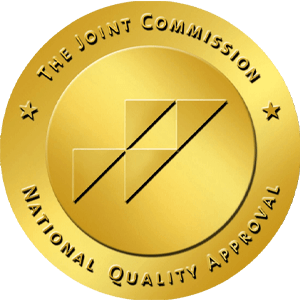“Unfortunately, it seems that we, as a society, have entered into a Faustian deal. Yes, we have these amazing handheld marvels of the digital age, tablets and smartphones, miraculous glowing devices that connect people throughout the globe and can literally access the sum of all human knowledge in the palm of our hand. But what is the price of all this future tech? The psyche and soul of an entire generation. The sad truth is that for the oh-so-satisfying ease, comfort and titillation of these jewels of the modern age, we’ve unwittingly thrown an entire generation under the virtual bus.” Dr. Kardaras
And believe it or not, Screen Addiction Disorder can be more difficult to treat than a drug addiction in today’s world. Screens are everywhere, from waiting in line at almost any place to pumping your own gas at the gas station. Most of us use screens at work or to accomplish work, from paying bills to entertainment- screens are part of life now. So it may come as no surprise then that Screen Addiction Disorder affects more people than you may think.
Children and young adults are on the rise as the most concerning age group as studies continue to show how screens and technology have an impact on our brain growth and health. Similar to substances such as drugs and alcohol, screen time can become an addiction that can damage your mental health and relationships if not treated. Experts estimate around 10% of screen users meet the requirements for screen addiction treatment. Therefore confirming the need for screen addiction recovery centers that can professionally provide guidance and support to anyone seeking.
Screen Addiction Disorder Affects More People Than You May Think
Yes it’s true, Screen Addiction Disorder affects more people than you may think! The statistics on screen use and its abuse are becoming increasingly alarming, with children and young adults concerned on the rise. Studies have found that teens are on screens a whopping 11 hours a day. Another 2017 survey found that 25 percent of Millennials spend an average of five hours a day using their phone; with a quarter of Millennials checking their phones more than 100 times a day. Mind you that those stats are pre-Covid; during the pandemic screen time has doubled as depression rates have tripled. In fact, there has been a significant amount of clinical research indicating that, in large part, our mental health crisis has been driven by the digital landscape and our 21st century lifestyles.
Technology has provided a lack of meaningful connection in the social media age, and ironically increased feelings of isolation. Because screens provide a false reality, a decreased sense of purpose and meaning in a post-industrial mechanized de-humanizing digital world is happening. Screen Addiction Disorder clinically looks like any other addiction as it is characterized by a person’s continued engagement in a problem behavior. In this case, screen usage to the point where it starts to adversely affect their life by becoming an addiction.
Those struggling with untreated Screen Addiction Disorder find that family dynamics suffer, academic and/or work performance suffers, as do interpersonal relationships. As a Screen Addiction Disorder worsens, so can the health and hygiene of the user deteriorate as well. We see screen addicts who have their real-life experiences replaced by their digital ones, this could mean less baseball and more Minecraft for our children. Leaving us all to wonder what a future of society can look like in generations to come.
How Do You Know If You Have A Screen Addiction?
“The amount of time you spend in front of a screen may have a negative impact on your mental and emotional health. Experts believe that increased screen time is linked to depression, as well as an increase in suicidal behavior and a decrease in one’s ability to read emotions in general.”
With screens found everywhere in today’s world, how can you tell if you have a healthy use of screen time or abuse it on the verge of addiction? Factors such as mental health, age, personality type, unresolved trauma, neglect, and environment can all play a huge role in a Screen Addiction Disorder. Understanding what screen addiction looks like and feels like can help determine if you or someone you love is showing concerning signs of a disorder.
Commonly Observed Signs Of Screen Addiction:
- Daily tasks are hampered by screen time.
- Screen time is the primary source of pleasure for you.
- In the home, screens are a major source of contention.
- You’re finding yourself spending an increasing amount of time online.
- You spend more time with virtual friends than you do with actual friends.
- Your work’s consistency has deteriorated.
- Decline of hobbies or activities once enjoyed without the use of a screen.
- Feelings of anxiety and/or depression when screen time is lost.
Addiction Disorder affects more people than you may think, and we understand that at Omega Recovery. Dr. Kardaras’s unique program addresses all the underlying issues before the screen addiction grew to a disorder. Yes, there is a digital detox period, but during that digital detox, the real work of self-discovery and long-term recovery can occur. We meaningfully engage our screen addiction disorder clients and connect them to caring, well-trained masters-level therapists. Our staff is trained by Dr. Kardaras and certified by the NIDHW (National Institute for Digital Health and Wellness). Clients begin to do the underlying psychodynamic work so that they can build a stronger and more empowered sense of their own identity, without the counterfeit reality of their digital escapism.
Screen Addiction Treatment Program at Omega Recovery
Dr. Nicholas Kardaras is one of the country’s foremost experts on treating Screen Addiction Disorder and the author of the best-selling book “Glow Kids”. Founding Omega Recovery, he has developed a comprehensive and immersive 8-week program designed to not only treat the technology and screen addiction, but to also address any underlying and contributing issues. Our holistic, nationally-recognized and accredited program provides clients with the best evidence-based care, regardless of which stage of recovery. Whether you’re seeking help for yourself or a loved one struggling with recovery, our trained staff members are there every step of the way.
Omega Recovery also can provide the needed support while you or a loved one live at home. Therefore allowing a client to continue family and work responsibilities, and receive extensive screen addiction disorder treatment at one of our outpatient rehab facilities in Texas. We understand that Screen Addiction Disorder affects more people than you may think, so we aim to provide support to everyone in their unique situation.
We first design a recovery plan to address the specific addiction disorder, background, and mental health needs of each and every client. However, depending on the severity & length of an individual’s addiction we assign them to one of three levels of care. Because Screen Addiction Disorder affects more people than you may think, we are still understanding which forms of treatment work best as this disorder is relatively new. Nature Immersion and Adventure Therapy are used in conjunction with the following forms of treatment for screen addiction.
Treatment Services Included:
- Dual Diagnosis
- Medical Intervention
- Relapse Prevention
- Family Therapy
- Cognitive Behavioral Therapy
- One-on-one Counseling
- Psychiatric Care
- Mindfulness and Meditation
Screen Addiction Disorder affects more people than you may think, and we know this to be true. Omega Recovery was created in Austin in 2018 in order to address the explosive epidemic of addictive and mental health disorders that are occurring in record numbers among young people in America today. Building on the pioneering work of Dr. Nicholas Kardaras, Omega created cutting edge protocols combined with the best evidence-based modalities listed above to meaningfully and effectively treat young people struggling with Screen Addiction Disorder among others. Omega clients engage in trauma-informed therapies, including CBT, DBT, and traditional psychodynamic therapies along with experiential Nature Immersion and Adventure Therapy. Combined, these therapy options help shift young people into healthier habits as they also address the underlying issues that are contributing to their distress.
An Addiction Treatment Program That Works
In our Community Integrated Treatment Model, our Omega clients are engaged in living in the real world once again, helping to find their real identity and passion! Oftentimes, the screen devices are a substitute for a young person who feels bored, lost, depressed, adrift and lacking any real sense of purpose or direction. Omega Recovery helps them to find that meaningful sense of passion, purpose and direction in their lives.
Transitioning Back Into Your Life Successfully
Omega Recovery’s outpatient rehab is very similar to individual therapy. It is recommended as a step down from our higher structure programs, as it focuses heavily on re-introducing clients back into everyday life. Our licensed therapists work with our outpatient clients to build upon the momentum achieved during intensive outpatient treatment. We help create a “digital re-entry” plan so that our clients and their families have a clear road-map of the transition back to our highly technological world. The recovered Screen Addiction Disorder client needs to know how to balance healthy screen usage as they transition back into relationships, school, working, and everyday life.
At Omega Recovery we assist our clients in post-treatment transition planning that includes aftercare, case management, peer coaching, job placement, recovery housing, and much more. Our holistic, nationally-recognized and accredited program is here to provide screen addicted clients with the best evidence-based care. Whether you’re seeking help for yourself or a loved one struggling with a screen addiction, we can help at Omega Recovery of Austin. Our trained professional staff members have seen what seems to be a grim outcome turn out to be a pure and beautiful transformation. Often, the first step is awareness and bravery in finding the best version of ourselves.
Do You Have A Screen Addiction Disorder?
“So just pulling the plug on the devices doesn’t really count as screen addiction treatment—it doesn’t address what’s driving the compulsive behavior and the need to escape into screen addiction escapism.”
After learning about how Screen Addiction Disorder affects more people than you may think- are you now concerned about yourself? Three criteria factors must be met in order to be considered as having a Screen Addiction Disorder. The first is compulsion. The second is an inability to control the compulsion. And the third is ignoring the knowledge that it is taking over your life. Untreated Screen Addiction Disorder can hurt you and/or your relationships with others and have a negative effect on your daily obligations and reality- your ‘real life’. However, if you are unsure whether an addiction is certain there is a free quiz you can take to help determine the amount of concern. Take this test on behalf of yourself to check whether they have any of the symptoms that are typical among people with screen addiction.




